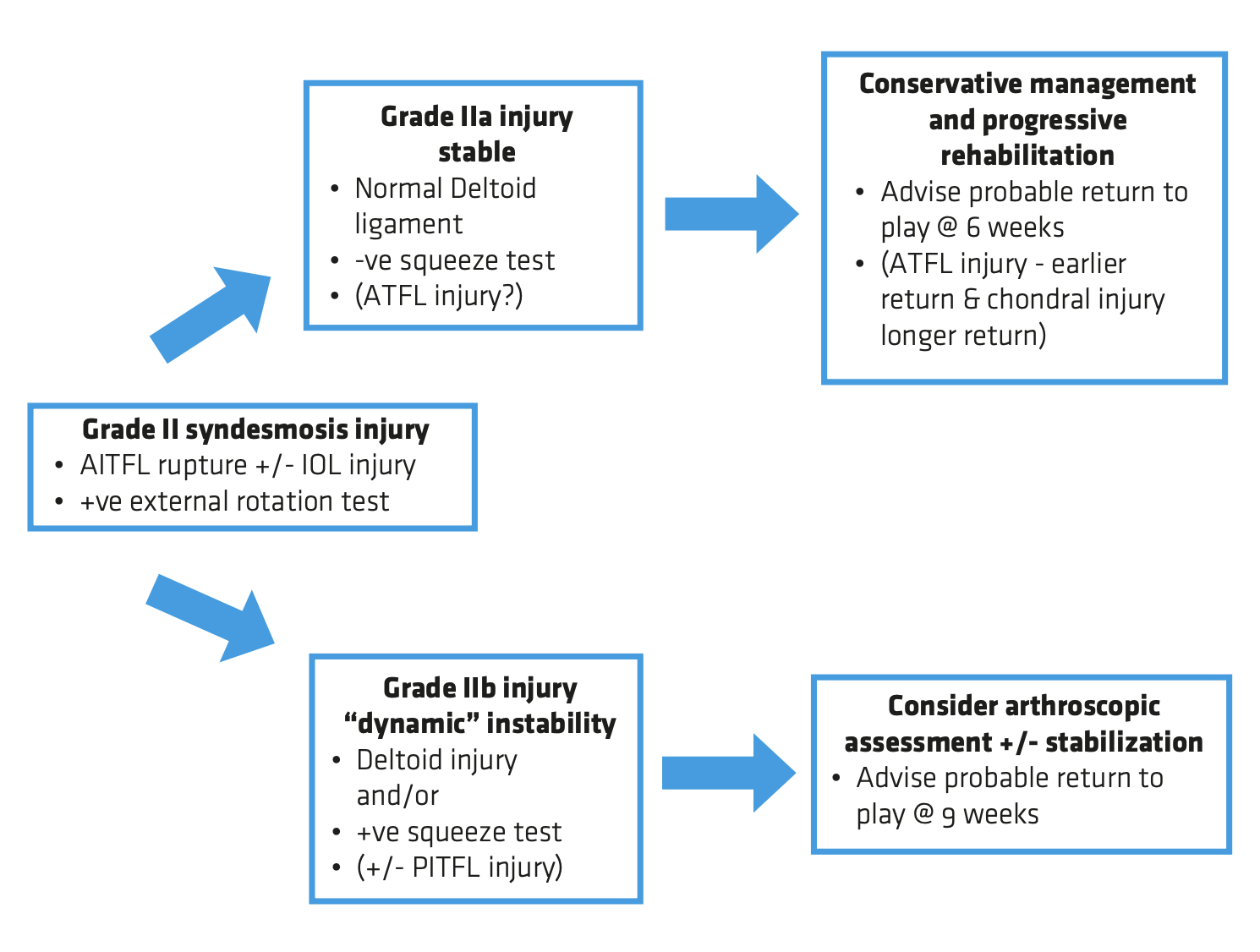
Ankle syndesmosis management: Grade 2B, or not 2B, that is the question!
ADAM JOHNSON
Recap and Introduction
This article, regarding the management of ankle syndesmosis injuries, follows on from a prior edition of the football medicine and performance publication which addressed the anatomy and diagnosis of these complicated injuries. Before moving on to the management it is worth briefly recapping on these areas covered in the previous article.
The ankle syndesmosis is predominantly comprised of three different ligamentous structures- Anterior Inferior Tibiofibular Ligament (AITFL), Posterior Inferior Tibiofibular Ligament (PITFL), Tibiofibular Interosseous Ligament (TFIL). The superficial and deep aspects of the Deltoid Ligament also provide key contributions to the stability of the syndesmosis.
Objective assessment is limited within the assessment of these injuries, and so clinicians must look to utilise a number of objective tests as well as imaging modalities to truly categorise the extent of the injury. This article will therefore predominantly reference back to the Modified West Point Criteria1 (Table One) which grades syndesmosis injury into four different gradings, with a distinction made between “stable” or “unstable” injuries which influences management decisions. For this reason, the remainder of the discussion in this article will solely reference this grading system in relation to management decisions.



